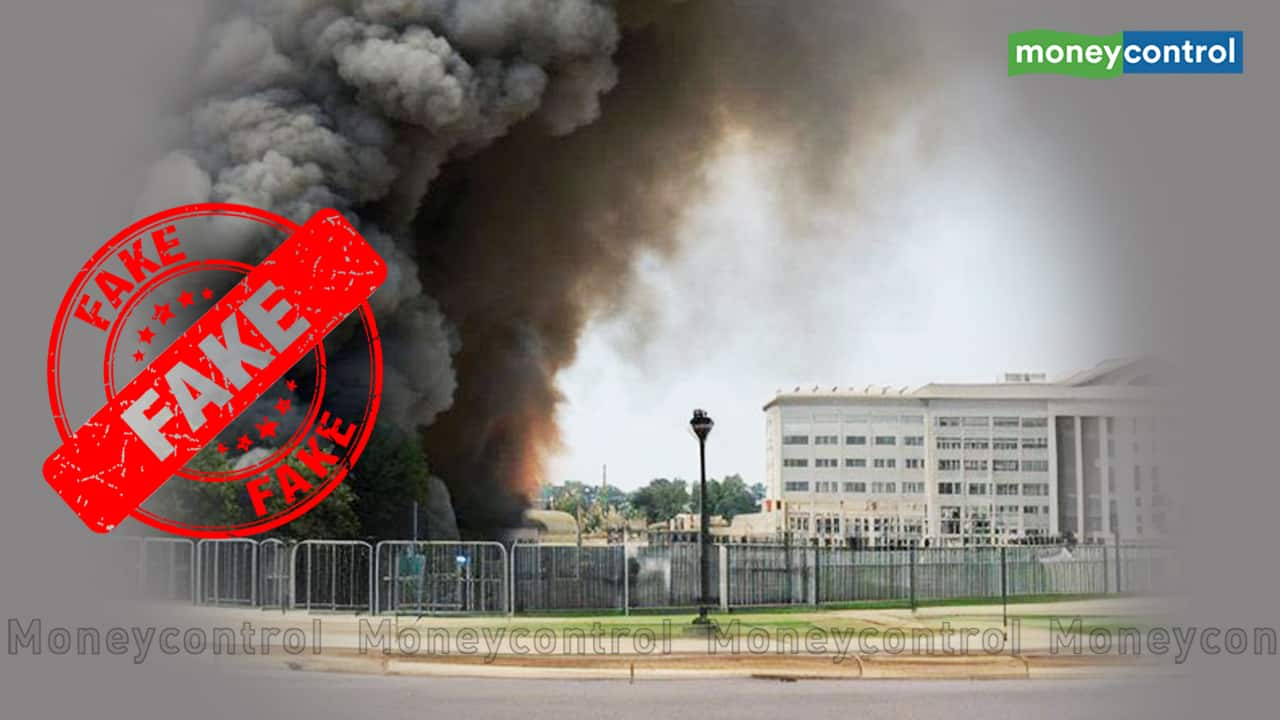
A picture may be worth a thousand words, but the price tag can jump to mind-boggling levels in the blink of an eye. USD 500 billion, for example.
On May 22, shortly after the US markets opened for trading, an alarming image started doing the rounds on Twitter.
It showed a large plume of smoke near the Pentagon Complex in Washington DC, sending netizens into a tizzy. Multiple verified handles on Twitter began sharing the picture and stating that the Pentagon – headquarters of the US military – has been hit by an explosion.
The panic rapidly spread to the markets and the S&P 500 index skidded to the session’s low, leaving investors poorer by USD 500 billion within minutes.
Before participants could make a sense of what was happening, the index made an equally stunning recovery. Reason? It turned out the image was a deepfake created by an artificial intelligence tool, though the ‘who’ and ‘why’ aspects still remain a mystery.
This was possibly the first case of an AI-created image causing the financial markets to swing.
Considering the mushrooming growth of AI and related fields, there’s high chance this won’t be the last.
Brave New World
At his much-awaited US Senate hearing last week, Sam Altman, CEO of OpenAI (creator of ChatGPT), pitched for something not traditionally associated with Silicon Valley executives.
Regulation.
He advocated setting up a new agency for licensing AI companies, adding that this technology could be as pivotal as the invention of the printing press.
But he did not try to play down the potential pitfalls.
“I think if this technology goes wrong, it can go quite wrong…we want to be vocal about that,” Altman told US lawmakers. “We want to work with the government to prevent that from happening.”
The issue has been vexing some of the brightest minds on the planet.
Also Read: INDIAai working groups likely to submit AI framework soon
In April, some tech luminaries, including Twitter chief Elon Musk and Apple co-founder Steve Wozniak, wrote an open letter calling for suspending the development of AI systems for at least six months so that there is a proper assessment of the risks posed to humanity.
Strictly speaking, AI has been a part of our lives for a long time now. The Google search algorithm, the autocorrect function on our smartphones, voice assistants such as Siri and Alexa, facial recognition cameras etc are all examples of artificial intelligence.
Computer programmes started being used to execute large trades on Wall Street since the early 1980s. The models rapidly grew in complexity, spawning a whole sub-sector of tech-enabled arbitrage trade like high-frequency trading (HFT).
AI-powered ETFs too have been around since the past few years, though their performance has been mixed compared to their traditional peers.
The current disruption, however, is due to the rise of a more evolved beast — generative AI.
Generative AI tools like ChatGPT, Dall-E, Midjourney and others create such hyper-realistic content that it is indistinguishable from the real deal. (And in many cases, better than human output).
Combine this with social media frenzy and the increasing use of trading algorithms which track news updates and other signals, and we are left clutching a grenade with a wobbly pin.
“The potential to generate fake videos, fake photos and other realistic sounding media using AI is huge. This can have an impact on the markets as was seen recently…. Any media will need confirmation in this scenario. Only verified and authenticated media should be put on mainstream media,” Ajay Bagga, Chairman of Elyments Platforms, told Moneycontrol.
“We will need cross checking and verification procedures to be strengthened and the one-upmanship for breaking-news supremacy to be given up in the wider interest of public order,” he added.
Compounded Problems
Analysts fear the mushrooming of generative AI content will act as an explosive fuel for HFT algorithms, which are designed to react in milliseconds to real-time developments.
This can trigger a vicious feedback loop where bad news (whether real or fake) is amplified by HFT algos executing large trades in tandem, causing sudden market crashes.
The relief rallies too are expected to be swift, though as John Maynard Keynes quipped around a century back, the markets can stay irrational longer than some of us can stay solvent.
Which means that the individual traders – already at a Himalayan disadvantage vis-a-vis algo trading – need to have nerves of steel and wills of iron to navigate the choppy waters.
Even long-term investors would do well to spot the emerging trends.
In a recent report, Goldman Sachs said generative AI could drive a 7 percent increase in global GDP, equivalent to almost $7 trillion, and lift productivity growth by 1.5 percentage points over a 10-year period.
But it can also expose 300 million full-time jobs to automation, the report added.
Advances in AI are expected to have far-reaching implications for the global enterprise software, healthcare and financial services industries, not to mention humongous second-order effects across multiple sectors and the wider society at large.
“We are strongly of the view that AI will change the world,” Jim Reid, strategist at Deutsche Bank, said in a recent note.
Understatement of the year, perhaps, but nevertheless encapsulating a momentous truth.





